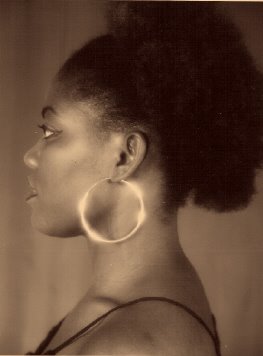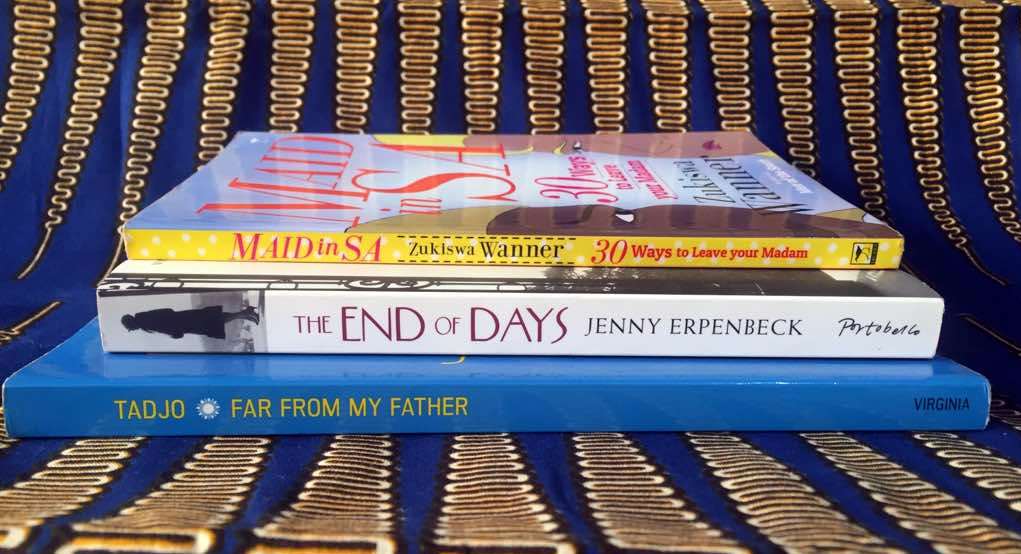
Uncomfortable Truths, Hidden Histories, Unheard Voices
You will by now have heard or read something about Uncomfortable Truths, you might even have seen the exhibition for yourself. I haven't been there, but I know a man who has. Poet Odia Ofeimun was at the V&A Museum yesterday and in a telephone conversation, expressed serious misgivings about the much talked about exhibition on Slavery. And from what he has to say, it seems clear that the subject of Slavery remains an 'Uncomfortable Truth' indeed - especially here in the heart of the British Empire.
Ofeimun observed that Britain has more resources than many African countries to mount a large scale exhibition on Slavery, but the V&A effort seems to him a wasted effort, and deliberately so. "It's as if the attempt is to make it impossible to really know the story of the Slave Trade."
Uncomfortable Truths, the poet reported, is scattered all over the museum amongst other unrelated exhibits, so that the viewer is made to go round searching - and sometimes failing - to find it. "It is expressed in terms of a conversation with the pre-existing artworks in the museum, so that the story of Slavery is actually hidden in the place. Hidden in other stories."
The installation that comes the closest to telling the story is an Audio-Visual which, crucially, is unaccompanied by any visuals. The very powerful, painful and at times beautiful images of Slavery - are left out. As for what the audio-visual says, it went something like (and the blogger paraphrases): I was once a king but now I make rings. I have rings. Or something to that effect.
Images - or the lack of them - led Ofeimun to share his impressions of Goree Island in Senegal, where millions of African were shipped off into bondage. "I went to Goree. I was angry." In Goree, the images that tell the story of the enormity of Slavery survive, but they are being eroded due to ineptitude and carelessness on the part of those responsible for the UNESCO World Heritage Site. "It is painful," Ofeimun said. "Our leaders are in a mess, sucking up to the West so much that they don't want to offend. It's as if, 'don't tell them too much' so they won't be angry."
Still, in Goree, you see the images and that counts for a lot. "What I saw in Britain (and the V&A) is that the story of Slavery is being destroyed. It is not ineptitude or anything like that, but a deliberate watering down." Ofeimun added that what passes for images in Uncomfortable Truths are often quite bland. He described a sculpture of a headless hunter in adire (tie & dye) fabric (presumably by Yinka Shonibare) which, if you saw it outside of the context of this exhibition, would tell you nothing. Many viewers brought children to see the exhibition and Ofeimun regretted the fact that the children would actually learn nothing about the brutality of Slavery from Uncomfortable Truths.
The poet touched on Charles Dickens' Great Expectations which "told the story of gentlemen being made in Britain by the money from the Slave Trade," with only the merest nod of acknowledgement to Slavery itself - and Jane Austen's Pride and Prejudice which simply washes over the whole subject of Slavery. That white-washing, talking-over, call it what you like "is still being done," according to Ofeimun.
"It's a travesty," he declared.
- Uncomfortable Truths is at the V&A until 17 June.










.jpg)





10 comments:
Molara, thanks. I plan to visit the V&A Museum next week, so I will check out this exhibition
See my April 06th post.
I will return to read your post.
I've just been and I'll be back there. Thanks a lot, Renegade!
Hi Ababoy,
I've got to go see/hear/confront that Uncomfortable Truth, myself. Thanks for stopping by.
MW
I would love to see this exhibition at the V&A since it doesn't look like it can travel. It seems to me that the 21st C culture has lost its ability deal with truth and look it in the eye on any level - past, present or future... perhaps that is the most important role an artist plays - revealing truth and beauty when no one else can see it.
What an amazing work of art on this post... Stunning my friend.
Great blog! Just discovered it...
I enjoyed reading this post. The exhibit appears to engage in a radical reimagining and rewriting of the contents and forms of historical narratives of enslavement. Thanks for sharing. I look forward to reading more of your posts on the subject of "Slavery--Alternative Voices".
The concept behind the exhibit sounds like an interesting one: fragmenting the narrative of a trans-continental event that was itself fragmented. The question, of course, is the execution--whether the exhibit succeeds in conveying any meaning whatsoever or whether it degenerates into a display of pretentious know-nothingism.
I enjoy this blog.
this is food for thought, wb
Post a Comment